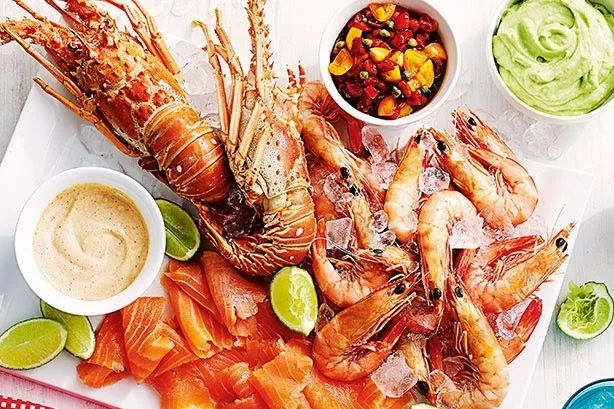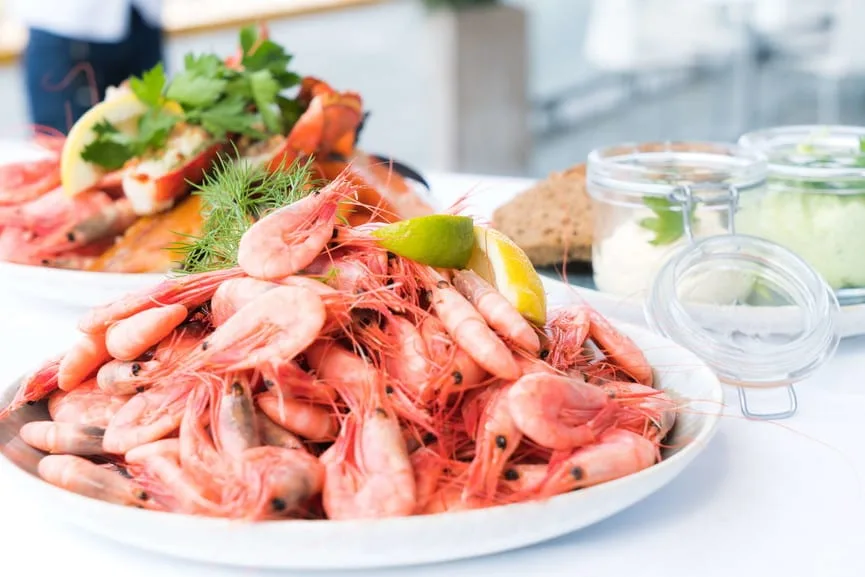Losing weight can feel like an uphill battle. With so many fad diets and exercise trends, it’s hard to know where to begin. However, going back to basics with a balanced diet focused on nutritious whole foods can set you up for sustainable success. This is where seafood comes in – it’s a powerhouse addition to any weight loss plan. Let’s dive in and explore the many benefits of incorporating more seafood into your diet.

The Nutritional Score of Seafood
Seafood is nutrition dynamite when it comes to supporting weight loss. Ounce for ounce, most types of fish and shellfish pack a protein punch with less calories and fat than other animal proteins like beef or pork. For example, a 3 ounce serving of cod contains 15-20 grams of protein with around 70-80 calories and less than 1 gram of fat. Compared to a similar serving size of beef containing nearly double the calories and over 5 times the amount of fat, it’s easy to see why seafood reigns supreme.
Beyond amazing protein content, the power of seafood for weight loss also stems from its abundance of omega-3 fatty acids. Salmon, mackerel, sardines, and other fatty fish are excellent sources. Research shows omega-3s may help boost metabolism and increase fat burning. The anti-inflammatory effects are also linked to improved insulin sensitivity and reduced belly fat storage over time. For weight loss and overall health, seafood provides nutritional advantages over many other protein options.
Seafood’s Role in Satiety
Feeling satisfied and full after a meal is key to weight loss success. Seafood can be a strategic choice for controlling hunger and calorie intake throughout the day. The combination of protein, healthy fats, and micronutrients makes seafood a filling option. For example, in one study women who had salmon or cod for lunch reported feeling fuller and ate less at dinner compared to women who had chicken or beef.
Beyond individual meals, a diet rich in seafood may also promote satiety between meals. Some compounds in fish like amino acids play a role in appetite regulation by slowing digestion and stabilizing blood sugar. Examples of satisfying seafood dishes include fish tacos with veggies, shrimp and veggie kebabs, or clam chowder. Focus on lean preparations without heavy sauces or breading to make the most of seafood’s satiating effects for weight loss.

The Seafood Lifestyle
To fully benefit, build your lifestyle around seafood as a flavorful, nutritious staple. Aim for at least two servings per week, which provides essential omega-3s. Salads, grain bowls and tacos all pair well with grilled, baked or sautéed fish. For easy dinners, keep sustainable frozen seafood like cod, mussels or shrimp on hand. Soups and chowders also showcase seafood’s versatility across cuisines.
When shopping, look for fresh seafood that is briny, firm and resilient to gentle pressure. Prioritize wild-caught or sustainably farmed varieties. Cook seafood simply with herbs, spices and citrus so the natural flavors shine through. Baking, grilling, broiling or poaching allows the fish to gently cook while preserving moisture. Avoid heavy batters or sauces that sabotage its lean nutrition profile. Follow these tips to make seafood a delicious and diet-friendly centerpiece.
Seafood vs. Other Protein Sources
If you’re seeking sustainable weight loss, seafood offers distinct advantages over other proteins like chicken, pork or beef. Let’s compare a 3 ounce portion of salmon to the same amount of chicken breast. Salmon has around 175 calories with 20 grams of protein and 6 grams of fat. Chicken breast has 140 calories but only 26 grams of protein and 3 grams of fat. While chicken has fewer calories, salmon provides more satiating protein and healthy omega-3 fats. This helps explain why seafood consumption is linked to smaller waistlines.
Beef and pork offer less protein than seafood for more calories and fat, making them less ideal for weight loss. For example, 3 ounces of pork tenderloin has 122 calories but only 22 grams of protein and 4 grams of fat. As protein-rich and nutritious options like salmon outperform these alternatives, seafood is poised to be your new go-to protein source for slimming down.

Seafood and Heart Health
Beyond supporting your weight loss goals, incorporating seafood also benefits heart health. Eating fish just 1-2 times per week is linked with a reduced risk of heart attack and stroke of up to 15%. The omega-3 fats in seafood help reduce inflammation, lower triglycerides, and decrease plaque buildup in arteries. All of these cardio-protective benefits also tie in to your weight loss efforts. Obesity is a risk factor for many chronic diseases, so optimal nutrition from seafood protects your health as you shed pounds. It’s a win-win situation!
Seafood and Weight Loss Plateaus
Are you hitting a plateau or experiencing slowed progress on your weight loss journey? Adding more seafood dishes throughout the week may help reignite fat burning. Thanks to its stellar protein content, studies show that seafood increases diet-induced thermogenesis more than other proteins. This means it helps you burn slightly more calories digesting your food, creating a metabolism boost. More importantly, seafood provides essential nutrients missing from many restrictive diets that may hinder long-term success. Enjoying salmon, tuna, or shrimp instead of processed low-fat foods can help re-energize weight loss.
Many successful dieters credit seafood’s satiating effects for pushing past barriers. One woman I spoke with lost 50 pounds by having salmon or tuna salad four times per week instead of deli meats or roast beef. The extra protein and nutrition provided a satisfying meal, giving her energy to be more active. Seafood blended into smoothies is another innovative way to kickstart weight loss when you’re feeling stuck. The options are wide open once you embrace seafood’s slimming potential!

Conclusion
Seafood is truly a nutritional rockstar that flexes its muscles for weight loss in many powerful ways. With abundant protein, satiating healthy fats, and micronutrients, it outshines most other protein choices for fewer calories. Beyond just food math, seafood provides compounds that optimize metabolism, appetite regulation, body composition and heart health. All these benefits contribute to sustainable fat burning. By embracing seafood meals and snacks 2-3 times per week, you feed your body slimming and nourishing nutrition. Let the symphony of seafood propel you closer to your weight loss goals.
If you’re inspired to add more seafood to your plate, explore my other articles on meal planning, grocery shopping, and cooking techniques to support your weight loss journey. Knowledge is power when it comes to boosting nutrition, health and wellness. Subscribe to my newsletter for monthly motivation, tips and recipes to continue making progress. Together we can tune up our lifestyles and taste the music of success!
Join Us!
We hope this article provided a helpful overview of the many benefits of seafood for achieving weight loss success. If you found it useful, please subscribe to our newsletter below for more tips and recipes focused on food, nutrition, health and wellness. Explore other posts on our website covering a wide range of topics related to your journey. I aim to empower others to take control of their health and reach their goals. Thank you for reading and let me know how seafood is working for you!
Thank you for reading this post, don't forget to subscribe to our free newsletter
!

